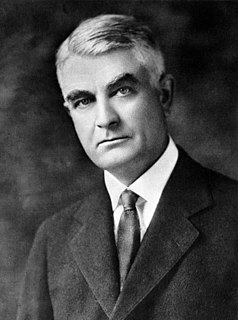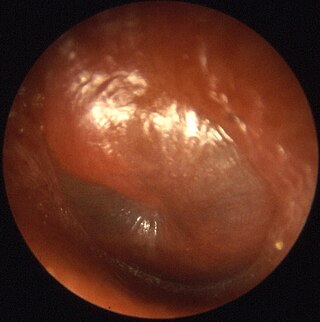Related Research Articles

The Mayo Clinic is a nonprofit American academic medical center focused on integrated health care, education, and research. It employs over 4,500 physicians and scientists, along with another 58,400 administrative and allied health staff, across three major campuses: Rochester, Minnesota; Jacksonville, Florida; and Phoenix/Scottsdale, Arizona. The practice specializes in treating difficult cases through tertiary care and destination medicine. It is home to the top-15 ranked Mayo Clinic Alix School of Medicine in addition to many of the highest regarded residency education programs in the United States. It spends over $660 million a year on research and has more than 3,000 full-time research personnel.

Abdominal thrusts, also known as the Heimlich maneuver or Heimlich manoeuvre, is a first aid procedure used to treat upper airway obstructions by foreign objects. American doctor Henry Heimlich is often credited for its discovery. Performing abdominal thrusts involves a rescuer standing behind a patient and using their hands to exert pressure on the bottom of the diaphragm. This compresses the lungs and exerts pressure on any object lodged in the trachea, hopefully expelling it.

A hiatal hernia is a type of hernia in which abdominal organs slip through the diaphragm into the middle compartment of the chest. This may result in gastroesophageal reflux disease (GERD) or laryngopharyngeal reflux (LPR) with symptoms such as a taste of acid in the back of the mouth or heartburn. Other symptoms may include trouble swallowing and chest pains. Complications may include iron deficiency anemia, volvulus, or bowel obstruction.

Pyloric stenosis is a narrowing of the opening from the stomach to the first part of the small intestine. Symptoms include projectile vomiting without the presence of bile. This most often occurs after the baby is fed. The typical age that symptoms become obvious is two to twelve weeks old.

Gastritis is inflammation of the lining of the stomach. It may occur as a short episode or may be of a long duration. There may be no symptoms but, when symptoms are present, the most common is upper abdominal pain. Other possible symptoms include nausea and vomiting, bloating, loss of appetite and heartburn. Complications may include stomach bleeding, stomach ulcers, and stomach tumors. When due to autoimmune problems, low red blood cells due to not enough vitamin B12 may occur, a condition known as pernicious anemia.

The Mayo Clinic Hospital – Rochester is a 2,059-bed hospital located in Rochester, Minnesota. It comprises the Saint Marys Campus with its Mayo Eugenio Litta Children's Hospital, as well as its Methodist Campus, forming an integral part of the Mayo Clinic academic medical center. Mayo Clinic Hospital – Rochester is ranked first on the 2019–20 U.S. News & World Report Best Hospitals Honor Roll.
A complication in medicine, or medical complication, is an unfavorable result of a disease, health condition, or treatment. Complications may adversely affect the prognosis, or outcome, of a disease. Complications generally involve a worsening in severity of disease or the development of new signs, symptoms, or pathological changes which may become widespread throughout the body and affect other organ systems. Thus, complications may lead to the development of new diseases resulting from a previously existing disease. Complications may also arise as a result of various treatments.

William James Mayo was a physician and surgeon in the United States and one of the seven founders of the Mayo Clinic. He and his brother, Charles Horace Mayo, both joined their father's private medical practice in Rochester, Minnesota, US, after graduating from medical school in the 1880s. In 1919, that practice became the not-for-profit Mayo Clinic.
Abdominal bloating is a symptom that can appear at any age, generally associated with functional gastrointestinal disorders or organic diseases, but can also appear alone. The person feels gas in the stomach, or air filled in the stomach. Although this term is usually used interchangeably with abdominal distension, these symptoms probably have different pathophysiological processes, which are not fully understood.

Otitis is a general term for inflammation or infection of the ear, in both humans and other animals. When infection is present, it may be viral or bacterial. When inflammation is present due to fluid build up in the middle ear and infection is not present it is considered Otitis media with effusion. It is subdivided into the following:

Blood in stool looks different depending on how early it enters the digestive tract—and thus how much digestive action it has been exposed to—and how much there is. The term can refer either to melena, with a black appearance, typically originating from upper gastrointestinal bleeding; or to hematochezia, with a red color, typically originating from lower gastrointestinal bleeding. Evaluation of the blood found in stool depends on its characteristics, in terms of color, quantity and other features, which can point to its source, however, more serious conditions can present with a mixed picture, or with the form of bleeding that is found in another section of the tract. The term "blood in stool" is usually only used to describe visible blood, and not fecal occult blood, which is found only after physical examination and chemical laboratory testing.

Veterinary surgery is surgery performed on animals by veterinarians, whereby the procedures fall into three broad categories: orthopaedics, soft tissue surgery, and neurosurgery. Advanced surgical procedures such as joint replacement, fracture repair, stabilization of cranial cruciate ligament deficiency, oncologic (cancer) surgery, herniated disc treatment, complicated gastrointestinal or urogenital procedures, kidney transplant, skin grafts, complicated wound management, and minimally invasive procedures are performed by veterinary surgeons. Most general practice veterinarians perform routine surgeries such as neuters and minor mass excisions; some also perform additional procedures.

Inversion therapy, or simply inversion, is the process of seeking therapeutic benefits from hanging by the legs, ankles, or feet in an inverted angle or entirely upside down. It is a form of spinal traction. Gravity boots are ankle supports designed for inversion therapy. Some people use gravity boots to add an extra challenge to workouts, doing inverted crunches or squats.
Gastroparesis, also called delayed gastric emptying, is a medical disorder consisting of weak muscular contractions (peristalsis) of the stomach, resulting in food and liquid remaining in the stomach for a prolonged period of time. Stomach contents thus exit more slowly into the duodenum of the digestive tract. This can result in irregular absorption of nutrients, inadequate nutrition, and poor glycemic control.
Billroth I, more formally Billroth's operation I, is an operation in which the pylorus is removed and the distal stomach is anastomosed directly to the duodenum.
Gastroenterocolitis is a condition characterized by inflammation of the stomach, small intestines, and colon.

Klippel–Trénaunay syndrome, formerly Klippel–Trénaunay–Weber syndrome and sometimes angioosteohypertrophy syndrome and hemangiectatic hypertrophy, is a rare congenital medical condition in which blood vessels and/or lymph vessels fail to form properly. The three main features are nevus flammeus, venous and lymphatic malformations, and soft-tissue hypertrophy of the affected limb. It is similar to, though distinctly separate from, the less common Parkes Weber syndrome.
Louis Blanchard Wilson was an American pathologist and the chief of pathology at Mayo Clinic from 1905 to 1937. Wilson is most famous for initiating the routine use of the frozen section procedure for rapid intraoperative diagnosis.
St. Vincent's Medical Center Southside is a not-for-profit, faith-based hospital located in the southern part of Jacksonville, Florida. It is a member of St. Vincent's HealthCare and is affiliated with Ascension Health. Founded as St. Luke's Hospital in 1873, it was Jacksonville's first private hospital and is Florida's oldest private hospital.

Pyloroplasty is a surgery performed to widen the opening at the lower part of the stomach, also known as the pylorus. When the pylorus thickens, it becomes difficult for food to pass through. The surgery is performed to widen the band of muscle known as the pyloric sphincter, a ring of smooth, muscular fibers that surrounds the pylorus and helps to regulate digestion and prevent reflux. The widening of the pyloric sphincter enables the contents of the stomach to pass into the first part of the small intestine known as the duodenum.
References
- ↑ Clinic, Mayo (1918). Collected Papers of the Mayo Clinic. W.B. Saunders Company. pp. 60-65. Retrieved 13 November 2017.
Gastroduodenostomy.